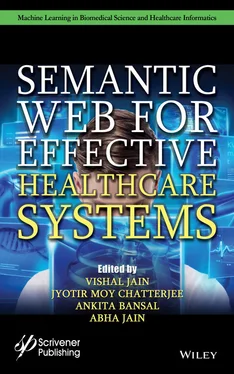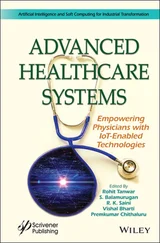© 2022 Scrivener Publishing LLC
For more information about Scrivener publications please visit www.scrivenerpublishing.com.
All rights reserved. No part of this publication may be reproduced, stored in a retrieval system, or transmitted, in any form or by any means, electronic, mechanical, photocopying, recording, or otherwise, except as permitted by law. Advice on how to obtain permission to reuse material from this title is available at http://www.wiley.com/go/permissions.
Wiley Global Headquarters111 River Street, Hoboken, NJ 07030, USA
For details of our global editorial offices, customer services, and more information about Wiley products visit us at www.wiley.com.
Limit of Liability/Disclaimer of WarrantyWhile the publisher and authors have used their best efforts in preparing this work, they make no representations or warranties with respect to the accuracy or completeness of the contents of this work and specifically disclaim all warranties, including without limitation any implied warranties of merchantability or fitness for a particular purpose. No warranty may be created or extended by sales representatives, written sales materials, or promotional statements for this work. The fact that an organization, website, or product is referred to in this work as a citation and/or potential source of further information does not mean that the publisher and authors endorse the information or services the organization, website, or product may provide or recommendations it may make. This work is sold with the understanding that the publisher is not engaged in rendering professional services. The advice and strategies contained herein may not be suitable for your situation. You should consult with a specialist where appropriate. Neither the publisher nor authors shall be liable for any loss of profit or any other commercial damages, including but not limited to special, incidental, consequential, or other damages. Further, readers should be aware that websites listed in this work may have changed or disappeared between when this work was written and when it is read.
Library of Congress Cataloging-in-Publication Data
ISBN 978-1-119-76229-4
Cover image: Pixabay.ComCover design by Russell Richardson
Set in size of 11pt and Minion Pro by Manila Typesetting Company, Makati, Philippines
Printed in the USA
10 9 8 7 6 5 4 3 2 1
The tremendous amount of data being generated on a daily basis in hospitals and other medical institutions needs to be properly harnessed and analyzed in order to gain useful insights. In other words, the health-related data needs to be explored in order to uncover valuable information that could lead to improved healthcare practices and the development of better biomedical products. However, there are many challenges, which need to be addressed before this goal is reached. One of the major challenges is interoperability of health and medical data. The data generated not only comes from different sources but also has inconsistencies in naming, structure, and format. An important requirement is to capture relevant data and also make it widely available for others to use. In addition to the data integration problem, user interaction with the data is another challenge. The difficulty lies in search handling, data navigation and data presentation. Finally, another challenge is how to use this huge amount of data to find valuable new patterns and transform such data into valuable knowledge, leading to potential improvement of resource utilization and patient health, and the development of biomedical products. There is a vast potential for data mining and data analytics tools in healthcare that could lead to useful information for decision making. In recent years, the Semantic Web has been gaining ground in addressing these challenges. The aim of this book is to analyze the current status on how the Semantic Web can be used to solve various challenges and enlighten readers with key advances in ontology-based information retrieval techniques in the healthcare domain. The following is a brief summary of the wide range of subjects covered throughout the book.
- Chapter 1discusses various information extraction techniques used to model the documents product/service reviews. The advantages of using the Semantic Web to ease communication between businesses and improve processes are also discussed.
- Chapter 2explores the impact of Semantic Web technologies and the challenges associated with their use in effective healthcare systems and also proposes solutions, which can be achieved with the present technology. In addition to this, some algorithms, frameworks, and real-time database systems realized with the help of artificial intelligence and web technology-based solutions are also discussed.
- Chapter 3focuses on the importance of an ontology-based system for a patient monitoring system. A domain ontology has been constructed to preserve the details of patient health issues. With the support of ontology, a patient monitoring system is constructed wherein data concerning every detail about the patient and their health is stored.
- Chapter 4highlights the role of Semantic Web technologies in improving services provided by healthcare systems. It elaborates on the search techniques used by researchers in the field to find the desired information. The role of semantics, how they are beneficial in the search process, and domain-specific resources are presented in detail. The latest technological advancements and resources from the bio-medical field are also discussed.
- Chapter 5discusses what actionable content should look like in practice and how it can become more efficient by aiding in clinical decision-making and administrative capability. The chapter renders various definitions of actionable content, and also focuses on the stages of health analytics and how ontology can be used for prescriptive health analytics.
- Chapter 6depicts the retrieval of ontology-based information from the medical literature database MEDLINE. The main focus of the chapter is to enhance the retrieval of information from the medical literature database and conduct the search with more clarity. The approach discussed to achieve this is the preliminary design and execution of an ontology-based intelligent agent system that applies Semantic Web language, which benefits efficient systematic retrieval of medical information.
- Chapter 7presents a historical analysis of an ontology-based system for robotic surgery and documents the most significant interventions of robots in medical surgery. The chapter discusses how the academic field has embraced this new discipline and how inclusive research on a worldwide scale has honed the design and method of robotic procedures, all while maintaining an impeccable metric.
- Chapter 8presents the applications of IoT in healthcare and how these applications can be used with the help of various sensors. It discusses the established strategies used by IoT-based devices to deal with patients, doctors, and hospitals in order to provide smarter and faster services. The authors propose an IoT-based architecture for monitoring the health of patients remotely.
- Chapter 9discusses the use of precision medicine in the context of ontology. It explains ontologies and their application in computational reasoning to promote an accurate classification of patients’ diagnoses and managing care, and for translational research.
- Chapter 10discusses the use of knowledge graphs for knowledge representation. A model for such a knowledgebase is proposed that makes use of open information extraction systems to capture relevant knowledge from medical literature and curate it in the knowledgebase of the clinical decision support system.
- Chapter 11covers all aspects related to the successful customization of data semantics, ontologies, clinical jobs, and free learning, and depicts the Unified Medical Language System (UMLS) framework used inside AQ21 rule learning programming. Ontologies are the quality systems for expressive genuine variables in clinical and flourishing fields.
Читать дальше












